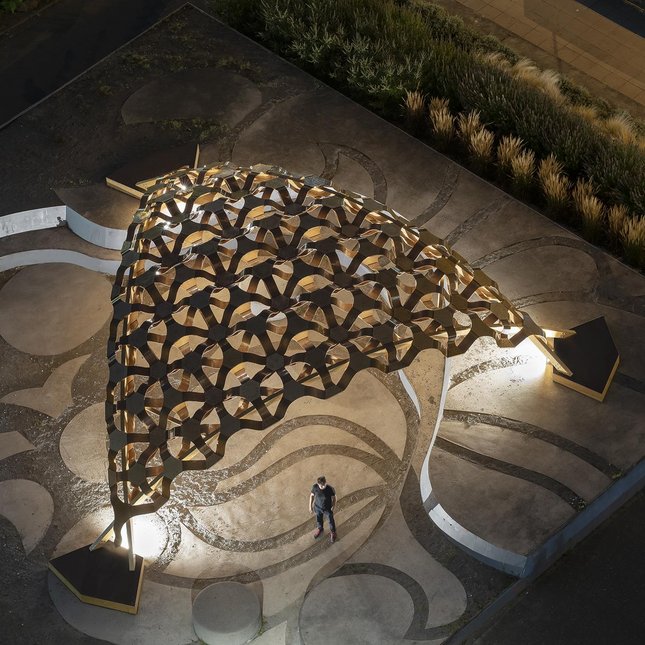Bio based composite materials in Pavilion and Canopy design
Duration
April 2018 - March 2019Project Manager
Biomat
Netherlands Organisation for Scientific Research (NWO), Creative industry - Knowledge Innovation Mapping (KIEM) project
This project explores the design, production and realisation of a combined structural and architectural application of Bio-Based Composite Materials in Pavilion and Canopy Roof structures. The application of bio-based materials in the built environment is an extremely promising approach towards achieving a sustainable environment and towards circular building, one of the National Science Agenda’s themes: “Energy and raw materials: Circular economy”.
Combined structural and architectural research will open up new design directions for these promising materials. In order to meet the ambitions resulting from the Paris Climate agreement (UNFCC 2015) it is essential to substantially increase the use of bio-based materials in the building industry. For this reason the possibilities for these materials in new designs for Pavilion and Canopy Roof structures are being explored in this project.
In Architectural designs of building (roof) structures however, these new Bio-Based Composite materials, have only been applied in secondary (facade) elements. This Bio-based Composite Canopy project will change this. The application and use of natural fibres such as Flax and Hemp in combination with bio-based resins in load bearing structures open up new ways of design with a form-freedom reminding of glass fibre composites. For example, shell like structures, become possible. New design opportunities will be explored.
Biomat
Netherlands Organisation for Scientific Research (NWO), Creative industry - Knowledge Innovation Mapping (KIEM) project
This project explores the design, production and realisation of a combined structural and architectural application of Bio-Based Composite Materials in Pavilion and Canopy Roof structures. The application of bio-based materials in the built environment is an extremely promising approach towards achieving a sustainable environment and towards circular building, one of the National Science Agenda’s themes: “Energy and raw materials: Circular economy”.
Combined structural and architectural research will open up new design directions for these promising materials. In order to meet the ambitions resulting from the Paris Climate agreement (UNFCC 2015) it is essential to substantially increase the use of bio-based materials in the building industry. For this reason the possibilities for these materials in new designs for Pavilion and Canopy Roof structures are being explored in this project.
In Architectural designs of building (roof) structures however, these new Bio-Based Composite materials, have only been applied in secondary (facade) elements. This Bio-based Composite Canopy project will change this. The application and use of natural fibres such as Flax and Hemp in combination with bio-based resins in load bearing structures open up new ways of design with a form-freedom reminding of glass fibre composites. For example, shell like structures, become possible. New design opportunities will be explored.

In Architectural designs of building (roof) structures however, these new Bio-Based Composite materials, have only been applied in secondary (facade) elements. This Bio-based Composite Canopy project will change this. The application and use of natural fibres such as Flax and Hemp in combination with bio-based resins in load bearing structures open up new ways of design with a form-freedom reminding of glass fibre composites. For example, shell like structures, become possible. New design opportunities will be explored.